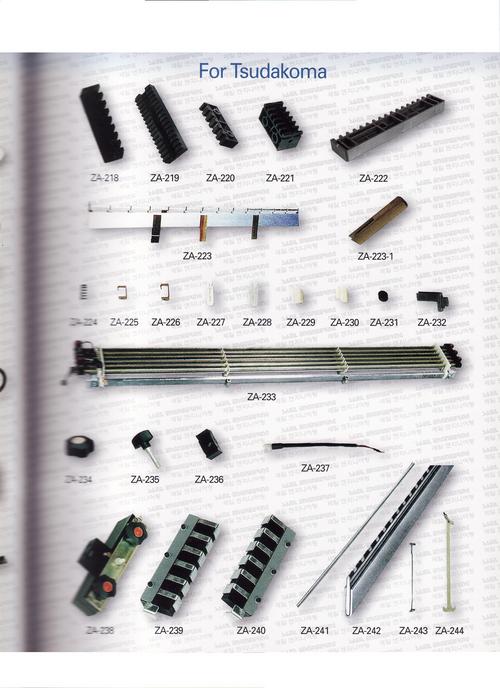
Textile Machines Rapier Sensors
Product Details:
- Part Type Sensor
- Tensile Strength High tensile strength
- NO. Of Hole 2 or 4 (depending on mounting)
- Thermal Conductivity Low
- Automation Grade Automatic
- Capacity High response rate
- Noise Level Low
- Click to View more
X
Textile Machines Rapier Sensors Product Specifications
- Accurate detection, Durable, Shock resistant, Easy installation
- Standard, Compact
- 60 mm x 25 mm x 18 mm
- Up to 1200 rpm
- For detecting rapier movement in looms
- Rapier Loom
- Low
- High response rate
- Automatic
- Rapier Sensor
- Sensor/Spare part
- Low
- High tensile strength
- 2 or 4 (depending on mounting)
- Sensor
Product Description
We a well-known trader and supplier in the domain, engaged in offering excellent quality Textile Machines Rapier Sensors. These sensors are immensely used in textile industries for providing power in the machines. Under vendors' visionary guidance, offered sensors are precisely manufactured by utilizing supreme quality raw material and high-end machines in line with the set market norms. In addition to this, we provide these Textile Machines Rapier Sensors in different technical specifications at pocket-friendly prices.
Features:
-
Corrosion resistance
-
Robustness
-
Easy installation
-
High tensile strength
Unmatched Precision and Speed
Experience reliable and fast rapier movement detection with sensors offering a response time of under 5 milliseconds. Engineered for high-speed looms, these sensors are crafted to meet the demands of modern textile production lines, accommodating speeds up to 1200 rpm.
Durable and Versatile Construction
Protected by an IP65-rated enclosure, these sensors boast excellent resistance to dust, water, and mechanical shocks. High tensile strength materials ensure longevity, while the low thermal conductivity maintains performance in variable environmental conditions.
Effortless Integration and Compatibility
With universal mounting options (2 or 4 holes), these sensors fit most standard rapier looms. Their compact design (60 mm x 25 mm x 18 mm) supports easy, trouble-free installation, making them suitable for both upgrades and replacements.
FAQs of Textile Machines Rapier Sensors:
Q: How do these rapier sensors enhance weaving machine performance?
A: By detecting rapier movement with response times under 5 ms and delivering precise output signals (PNP/NPN), these sensors enable rapid, accurate loom operation, resulting in improved fabric quality and reduced production downtimes.Q: What are the key steps for installing the rapier sensors on a loom?
A: Installation is straightforward: choose the appropriate mounting option (2 or 4 holes), align the sensor to detect the rapiers passage, and securely fasten the unit. Finally, connect the output wires to the control system, ensuring correct PNP or NPN configuration as needed.Q: When is it recommended to replace the rapier sensor in my weaving machine?
A: It is advisable to replace the sensor if you notice inconsistent rapier detection, frequent loom stoppages, or after prolonged use in harsh environments. Routine checks can help maintain optimal sensor efficiency.Q: Where are these sensors suitable for use within the textile industry?
A: These sensors are primarily utilized in rapier looms across textile manufacturing plants, particularly where high-speed and accurate rapier movement detection are crucial for seamless weaving operations.Q: What makes these sensors compatible with most rapier loom models?
A: The compact, standardized dimensions, adjustable sensitivity, and universal mounting holes ensure adaptability to different loom frames and control systems, regardless of make or model.Q: How does low thermal conductivity benefit the operation of these sensors?
A: Low thermal conductivity helps maintain the sensors operating integrity during temperature fluctuations, preventing false signals or sensor degradation in environments with variable heat levels.Q: What are the primary advantages of using these rapier sensors in an automated setup?
A: These sensors offer high durability, accurate detection at high speeds, shock resistance, and low noise levelsmaking them ideal for automatic operations and for reducing maintenance needs within highly mechanized textile mills.Tell us about your requirement

Price:
Quantity
Select Unit
- 50
- 100
- 200
- 250
- 500
- 1000+
Additional detail
Mobile number
Email







